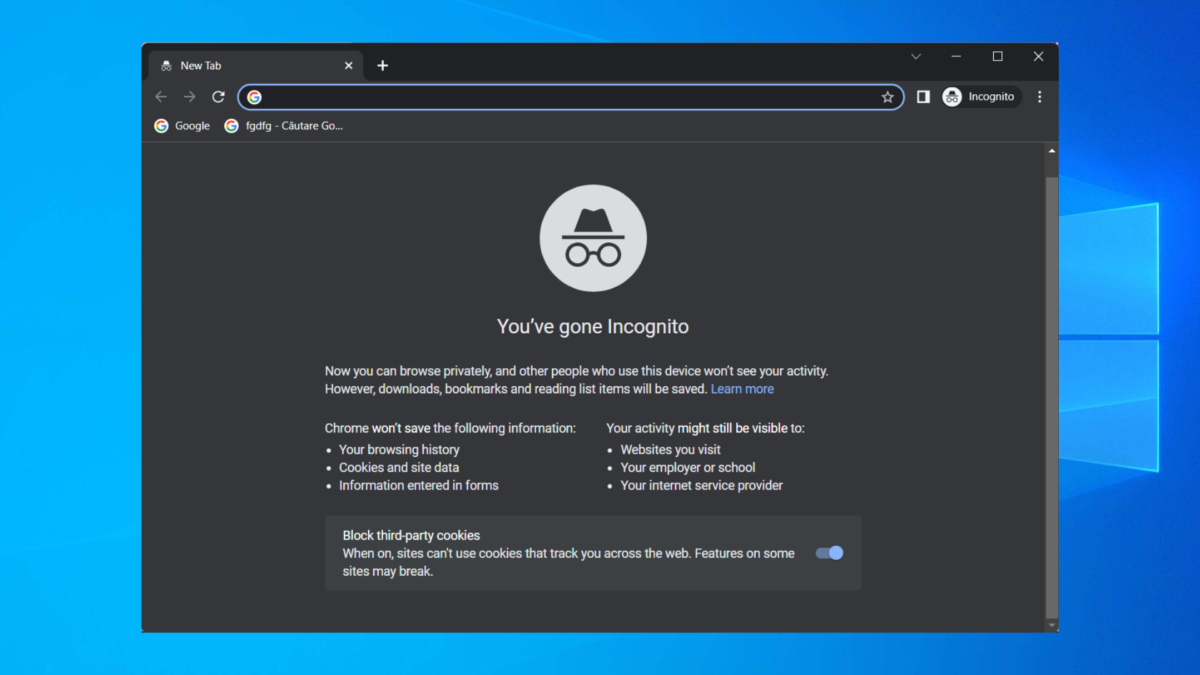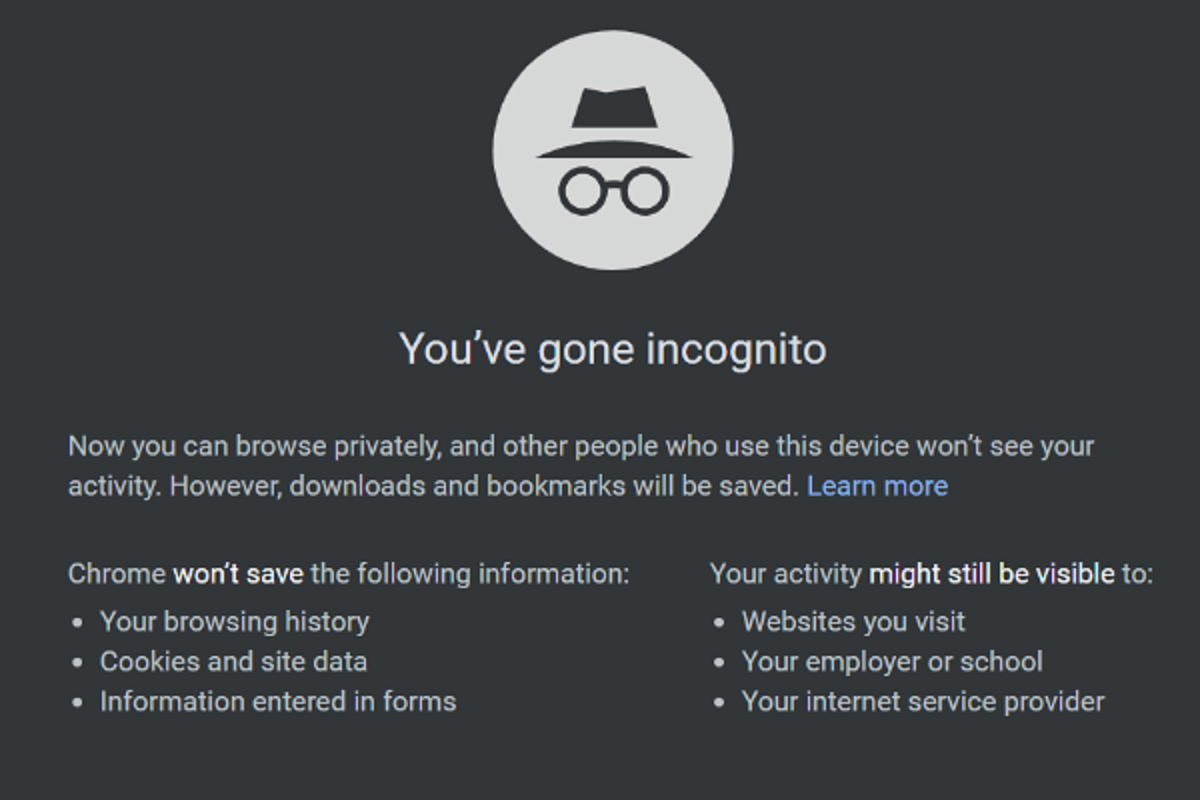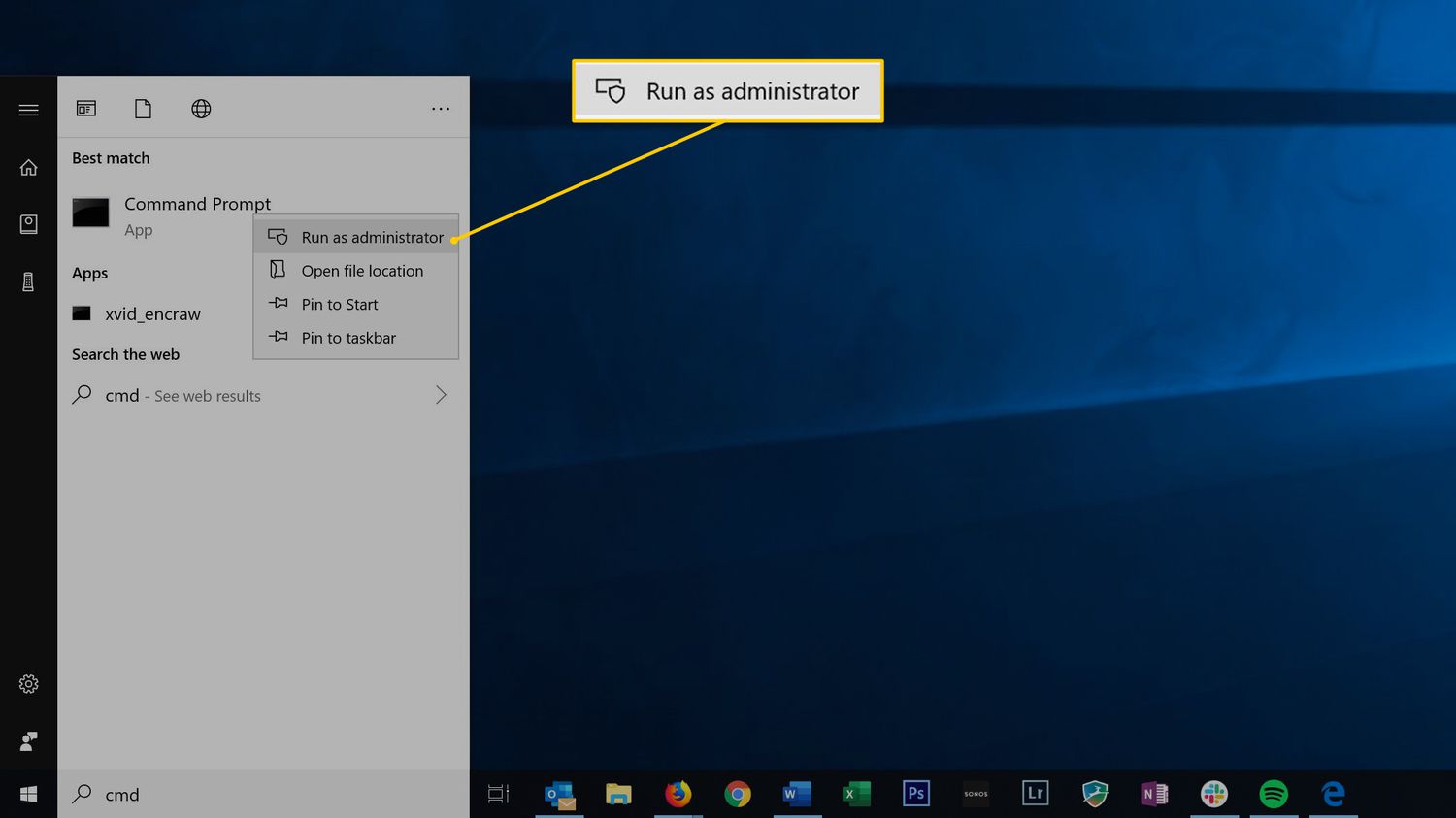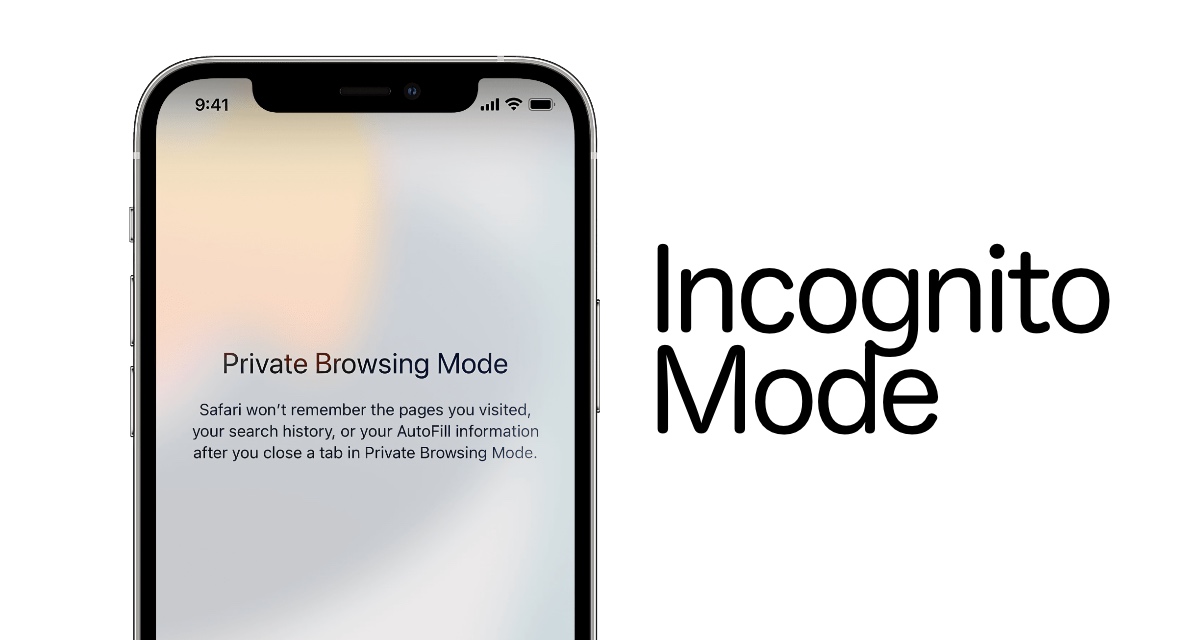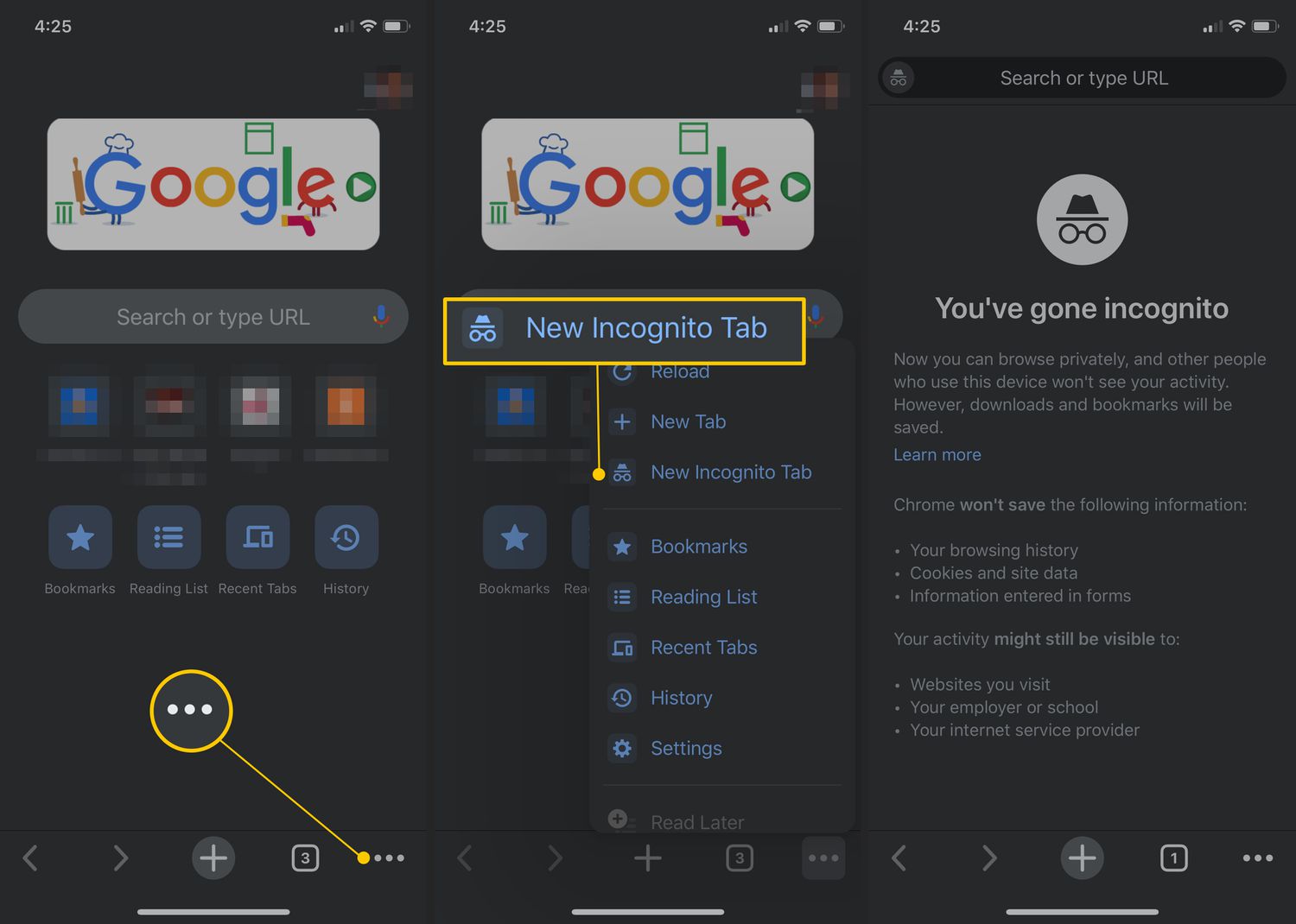Introduction
Welcome to the digital age, where browsing the internet has become an integral part of our daily lives. Whether we’re searching for information, shopping online, or connecting with friends on social media, our online activities leave behind a digital trail. However, there are times when we may want to browse the web privately, without our search history or cookies being saved. This is where Incognito Mode comes into play.
Incognito Mode, also known as private browsing, is a feature available in most modern web browsers that allows users to surf the web without leaving a trace. When you enable Incognito Mode, your browser won’t save your browsing history, cookies, or any other data. It provides a temporary session that helps protect your privacy.
In this article, we will explore the significance of Incognito Mode and discuss the reasons why you may encounter difficulties turning it on. Whether you’re a curious internet user or someone who values their online privacy, understanding the ins and outs of Incognito Mode can be beneficial.
So, if you’ve ever wondered why you can’t turn on Incognito Mode or encountered any issues while trying to use it, you’ve come to the right place. Let’s delve into the world of private browsing and uncover the reasons that might impede your access to this useful feature.
What is Incognito Mode?
Incognito Mode is a feature found in popular web browsers that allows users to browse the internet privately and anonymously. When you enable Incognito Mode, your browser creates a temporary session that doesn’t save your browsing history, cookies, or other site data. This means that any websites you visit or searches you perform will not be stored on your device.
It’s important to note that while Incognito Mode can help protect your privacy from others who may access your device, it does not make you completely anonymous online. Your internet service provider, the websites you visit, and any network administrators can still track your online activities.
In Incognito Mode, your browser also disables certain features that could potentially share information about your browsing session. For example, extensions and add-ons are often disabled by default to prevent them from collecting data or interfering with your private browsing experience.
While the specific functionalities of Incognito Mode may vary slightly depending on the browser you’re using, the core purpose remains the same: to provide a private browsing experience that leaves no trace of your online activities on your device.
Some common uses for Incognito Mode include:
- Online shopping: Incognito Mode can be useful when researching products or comparing prices, as it prevents websites from tracking your browsing behavior and potentially manipulating prices based on your history.
- Banking and financial transactions: Using Incognito Mode can add an extra layer of security when accessing your online banking or conducting sensitive financial transactions.
- Shared devices: If you’re using a public or shared computer, enabling Incognito Mode ensures that your browsing activities are not accessible to the next user.
- Surfing the web without leaving a trace: Whether you’re researching sensitive topics, planning surprise gifts, or simply want a clean browsing experience, Incognito Mode can come in handy by not saving any data on your device.
Now that we have a basic understanding of what Incognito Mode is and its potential uses, let’s explore why you may encounter difficulties when trying to enable this feature.
Why do you need Incognito Mode?
Incognito Mode offers several benefits that make it a valuable tool for many internet users. Whether you’re concerned about privacy, security, or simply want a clean browsing experience, here are some compelling reasons why you might need Incognito Mode:
Protecting your privacy
When you browse the internet in regular mode, your browser tracks and stores various data related to your online activities. This includes your browsing history, cookies, and cached files. While this information can be convenient for personalizing your browsing experience, it can also compromise your privacy. Incognito Mode ensures that none of your browsing data is saved, giving you the freedom to explore the internet without leaving a trail.
Browsing without targeted ads
Have you ever searched for a product online only to see ads for that product following you around the internet? This is the result of targeted advertising, where companies track your online behavior to display personalized ads. By using Incognito Mode, you can prevent websites from collecting data about your interests and online activities, leading to a more ad-free browsing experience.
Testing websites and accounts
Incognito Mode can be beneficial for web developers, designers, and anyone who wants to test websites or log into multiple accounts simultaneously. Since Incognito Mode doesn’t retain any session information, you can log in to a different account without conflicting with your existing login information. This makes it easier to test the functionality and appearance of a website or troubleshoot any issues you may encounter.
Surfing the web on public devices
If you’re using a public computer or a shared device, enabling Incognito Mode can help protect your personal information. Since your browsing history, cookies, and other data are not saved, the next user won’t have access to your sensitive information. This is particularly useful when accessing online banking, email, or other accounts that contain personal or confidential data.
Searching for sensitive information
If you’re researching sensitive topics, planning a surprise, or simply don’t want certain searches tied to your online profile, Incognito Mode provides an added layer of privacy. By preventing your searches from being saved, you can explore topics without worrying about them showing up in your search history or influencing future recommendations.
These are just a few examples of why you might need Incognito Mode. It offers a way to browse the internet more privately, protect your personal information, and have more control over your online experience. However, despite its benefits, you may sometimes encounter difficulties when trying to enable Incognito Mode. In the next section, we will explore some of the reasons that can prevent you from accessing this feature.
Reasons why you can’t turn on Incognito Mode
While Incognito Mode is a convenient feature offered by most modern web browsers, there are times when you may encounter difficulties enabling it. Let’s explore some of the common reasons why you might face challenges in turning on Incognito Mode:
Browser compatibility
One possible reason for not being able to access Incognito Mode is that your browser may not support this feature. While popular web browsers like Google Chrome, Mozilla Firefox, and Microsoft Edge offer Incognito Mode as a standard feature, older or less common browsers may not provide this functionality. In such cases, it is advisable to switch to a more popular and updated browser to take advantage of the private browsing experience.
Extensions and add-ons interfering with Incognito Mode
Extensions and add-ons can enhance your browsing experience by providing additional features and functionalities. However, some extensions may conflict with Incognito Mode, preventing you from enabling it. If you’re facing issues, try disabling or removing any extensions that may be causing conflicts. You can then try turning on Incognito Mode again to see if the problem is resolved.
Outdated browser
Another potential reason for not being able to turn on Incognito Mode is using an outdated version of your web browser. Browser updates often include bug fixes and improvements, which can resolve compatibility issues with features like Incognito Mode. Check for any available updates for your browser, install them, and then attempt to enable Incognito Mode again.
Parental controls or restrictions
If you’re using a shared device or have a managed account, it’s possible that parental controls or administrator restrictions are preventing you from accessing Incognito Mode. These settings are typically put in place to monitor and limit online activities. To enable Incognito Mode, you may need to have the necessary permissions or disable the parental controls temporarily. However, it’s important to respect any rules or guidelines set by the device owner or administrator.
Security software settings
Your security software, such as antivirus programs or firewalls, may have certain settings that conflict with or restrict the use of Incognito Mode. These security measures aim to protect your device and data, but they can sometimes interfere with the functioning of web browser features. To troubleshoot this issue, review your security software settings and ensure they are not blocking or restricting the use of private browsing.
By understanding these reasons, you can better identify and resolve any obstacles that prevent you from turning on Incognito Mode. In the next section, we will discuss some troubleshooting steps you can take to overcome these challenges and enjoy a private browsing experience.
Check if your browser supports Incognito Mode
Before troubleshooting any issues with enabling Incognito Mode, it’s essential to determine if your browser supports this feature. Here’s how you can check if your browser supports Incognito Mode:
Google Chrome
If you’re using Google Chrome, you can easily access Incognito Mode by clicking on the menu icon (three dots) in the top right corner of the browser window. If your browser supports Incognito Mode, you will see the option “New Incognito Window” in the drop-down menu. Simply click on it, and a new Incognito window will open, indicating that your browser supports this feature.
Mozilla Firefox
In Mozilla Firefox, click on the menu icon (three horizontal lines) in the top right corner of the browser window. If your browser supports Incognito Mode, you will find the option “New Private Window” in the drop-down menu. Clicking on it will open a new private window, confirming that your browser supports this feature.
Microsoft Edge
For Microsoft Edge users, click on the menu icon (three horizontal dots) in the top right corner of the browser window. If your browser supports Incognito Mode, you will see the option “New InPrivate Window” in the menu. Click on it to open a new InPrivate window, indicating that your browser supports private browsing.
These are just a few examples, as most modern web browsers offer Incognito Mode as a standard feature. Check your browser’s menu options or settings to see if it provides a similar feature under a different name.
If you cannot find the option to open a private or Incognito window in your browser’s settings or menu, it’s likely that your browser does not support this feature. In such cases, consider using a different browser that does support private browsing. Popular browsers like Google Chrome, Mozilla Firefox, and Microsoft Edge are widely available and offer Incognito Mode as a part of their features.
Now that you’ve determined if your browser supports Incognito Mode, let’s proceed to the next section, where we will discuss troubleshooting steps for enabling private browsing.
Clear your browsing history and cache
If you’re experiencing issues with enabling Incognito Mode, one of the first troubleshooting steps you can take is to clear your browsing history and cache. This can help resolve any conflicts or temporary glitches that may be interfering with the functionality of private browsing. Here’s how you can clear your browsing history and cache in popular web browsers:
Google Chrome
To clear your browsing history and cache in Google Chrome, follow these steps:
- Click on the menu icon (three dots) in the top right corner of the browser window.
- Select “History” from the drop-down menu.
- In the History tab that appears, click on “Clear browsing data” on the left side.
- Choose the time range for which you want to clear the data or select “All time” to delete everything.
- Select the types of data you want to clear, such as browsing history, cookies, and cached images and files.
- Click on the “Clear data” button to remove the selected data from your browser.
Mozilla Firefox
To clear your browsing history and cache in Mozilla Firefox, follow these steps:
- Click on the menu icon (three horizontal lines) in the top right corner of the browser window.
- Select “Options” from the drop-down menu.
- In the left sidebar, click on “Privacy & Security”.
- Scroll down to the “Cookies and Site Data” section and click on the “Clear Data” button.
- Choose the types of data you want to clear, such as browsing history and cache.
- Click on the “Clear” button to remove the selected data from your browser.
Microsoft Edge
To clear your browsing history and cache in Microsoft Edge, follow these steps:
- Click on the menu icon (three horizontal dots) in the top right corner of the browser window.
- Select “Settings” from the drop-down menu.
- In the left sidebar, click on “Privacy, search, and services”.
- Scroll down to the “Clear browsing data” section and click on the “Choose what to clear” button.
- Select the types of data you want to clear, such as browsing history and cached data.
- Click on the “Clear” button to remove the selected data from your browser.
Remember to restart your browser after clearing the browsing history and cache. Once you’ve completed this step, try enabling Incognito Mode again to see if the issue is resolved. If not, there may be other factors that are preventing you from accessing private browsing, which we will explore in the following sections.
Disable extensions and add-ons
If you’re encountering difficulties in enabling Incognito Mode, it’s possible that one or more extensions or add-ons installed in your browser are causing conflicts. Disabling these extensions or add-ons can help troubleshoot the issue and allow you to use private browsing without any hindrances. Here’s how you can disable extensions and add-ons in popular web browsers:
Google Chrome
To disable extensions in Google Chrome, follow these steps:
- Click on the menu icon (three dots) in the top right corner of the browser window.
- Select “More tools” from the drop-down menu.
- In the submenu that appears, click on “Extensions.”
- You will see a list of installed extensions. To disable an extension, toggle the switch next to it to the off position.
- Once you have disabled the desired extensions, restart your browser and try enabling Incognito Mode again.
Mozilla Firefox
To disable add-ons in Mozilla Firefox, follow these steps:
- Click on the menu icon (three horizontal lines) in the top right corner of the browser window.
- Select “Add-ons” from the drop-down menu.
- In the left sidebar, click on “Extensions” or “Appearance & Extensions”.
- You will see a list of installed add-ons. To disable an add-on, click on the toggle switch next to it to disable it.
- Restart your browser and try enabling Incognito Mode to see if the issue has been resolved.
Microsoft Edge
To disable extensions in Microsoft Edge, follow these steps:
- Click on the menu icon (three horizontal dots) in the top right corner of the browser window.
- Select “Extensions” from the drop-down menu.
- You will see a list of installed extensions. To disable an extension, click on the toggle switch next to it to turn it off.
- Restart your browser and attempt to enable Incognito Mode to check if the problem persists.
Disabling extensions and add-ons can help identify if any of them are causing conflicts with Incognito Mode. If you are able to enable private browsing after disabling the extensions, you can then narrow down the culprit by enabling each extension one by one to pinpoint the problematic one. In some cases, you may need to remove or update the extension to resolve the issue.
If disabling extensions and add-ons doesn’t resolve the problem, there could be other factors preventing you from accessing Incognito Mode. We will explore further troubleshooting steps in the next sections.
Update your browser
If you’re unable to turn on Incognito Mode, it’s worth checking if you’re using the latest version of your web browser. Outdated browsers can sometimes have compatibility issues that prevent certain features, including private browsing, from functioning properly. Updating your browser to the latest version can help resolve these compatibility issues and allow you to access Incognito Mode. Here’s how you can update popular web browsers:
Google Chrome
To update Google Chrome, follow these steps:
- Click on the menu icon (three dots) in the top right corner of the browser window.
- Hover over “Help” in the drop-down menu.
- In the submenu that appears, click on “About Google Chrome.”
- Chrome will automatically check for updates and install them if available.
- After the update is installed, restart your browser and try enabling Incognito Mode again.
Mozilla Firefox
To update Mozilla Firefox, follow these steps:
- Click on the menu icon (three horizontal lines) in the top right corner of the browser window.
- Select “Help” from the drop-down menu.
- In the submenu that appears, click on “About Firefox.”
- Firefox will automatically check for updates and install them if available.
- After the update is installed, restart your browser and attempt to enable Incognito Mode.
Microsoft Edge
To update Microsoft Edge, follow these steps:
- Click on the menu icon (three horizontal dots) in the top right corner of the browser window.
- Scroll down and select “Settings.”
- In the left sidebar, click on “About Microsoft Edge.”
- Edge will automatically check for updates and install them if available.
- After the update is installed, restart your browser and check if you can enable Incognito Mode.
Updating your browser ensures that you have the latest security patches, bug fixes, and improvements, which can help resolve any compatibility issues affecting private browsing. If updating your browser doesn’t solve the problem, there may be other factors at play that are preventing the use of Incognito Mode, which we will explore in the next sections.
Disable parental controls or restrictions
If you’re facing difficulties enabling Incognito Mode, it’s possible that parental controls or restrictions are preventing you from accessing this feature. Parental controls are designed to restrict and monitor a user’s online activities, especially for children or users who share a device. In order to use Incognito Mode, you may need to temporarily disable these controls. Here’s how you can disable parental controls or restrictions on different platforms:
Windows
If you’re using a Windows computer with parental controls enabled, follow these steps to disable them:
- Open the Control Panel by searching for it in the Start menu.
- Select “User Accounts and Family Safety.”
- Click on “Parental Controls.”
- Choose the user account for which you want to disable the controls.
- Click on “Disable” or “Turn off Parental Controls.”
- Restart your computer and try enabling Incognito Mode again.
Mac
If you’re using a Mac with parental controls enabled, follow these steps to disable them:
- Open System Preferences from the Apple menu.
- Select “Parental Controls.”
- Click on the lock icon and enter your administrator password.
- Select the user account for which you want to disable the controls.
- Uncheck the box next to “Enable Parental Controls.”
- Restart your computer and attempt to enable Incognito Mode.
Mobile devices
If you’re using a smartphone or tablet with parental controls enabled, the process may vary depending on the device and operating system. In general, follow these steps to disable parental controls:
- Go to the Settings app on your device.
- Look for the “Parental Controls” or “Screen Time” section.
- Select the user profile for which you want to disable the controls.
- Disable or turn off the parental controls or screen time restrictions.
- Restart your device and check if you can enable Incognito Mode.
Remember that parental controls are put in place for a reason, especially for child safety and monitoring online behavior. It’s important to respect and adhere to any guidelines or restrictions set by parents or administrators.
If disabling parental controls doesn’t resolve the issue, continue reading the next section for possible security settings that may be preventing Incognito Mode.
Possible security settings preventing Incognito Mode
If you’re unable to enable Incognito Mode, there’s a chance that certain security settings on your device or network are preventing its use. These security measures aim to protect your device and data, but they can sometimes interfere with the functionality of private browsing. Here are some possible security settings that could be preventing Incognito Mode:
Network restrictions
If you’re using a network that imposes restrictions or has a firewall in place, it may prevent you from using Incognito Mode. Network administrators can configure firewall settings to block certain types of traffic or restrict access to certain websites or features. If you’re on a public or work network, consider reaching out to the network administrator to inquire about any restrictions that might be in effect.
Security software settings
Your security software, such as antivirus programs and firewalls, can have settings that restrict or block private browsing modes. These security measures are designed to protect your device from malicious activities and potential threats. Check the settings of your security software to see if there are any options related to blocking or disabling private browsing. Temporarily disabling these settings or adding an exception for your browser may allow you to use Incognito Mode.
Administrative controls
If you’re using a device or computer managed by an administrator, they may have implemented controls or policies that limit the use of Incognito Mode. These controls can be set to enforce specific browsing rules or regulations, particularly in educational or workplace settings. In such cases, reaching out to the administrator or IT department to discuss the possibility of enabling private browsing may be the best course of action.
Parental control software
If you’re using a computer or device with parental control software installed, it may have settings that disable private browsing. Parental control software is designed to monitor and restrict a user’s online activities, primarily for child safety purposes. Check the settings of the parental control software and look for options related to private browsing or disabling Incognito Mode. Adjusting these settings may allow you to use private browsing.
If you suspect that security settings or restrictions are preventing you from using Incognito Mode, it’s important to consider the purpose behind these measures. They are put in place to protect your device and ensure a safer online experience. However, if you believe that enabling private browsing is necessary for your needs, you can explore options such as contacting the network administrator, adjusting security software settings, or discussing administrative controls with relevant personnel.
In the next section, we will wrap up our discussion and summarize the key points covered in this article.
Conclusion
In this article, we have explored the significance of Incognito Mode, also known as private browsing, and discussed the reasons why you may encounter difficulties turning it on. Incognito Mode offers a way to browse the internet privately, without leaving a trace of your online activities on your device.
We started by understanding what Incognito Mode is and its potential uses. It allows you to protect your privacy, avoid targeted ads, test websites and accounts, surf the web on public devices, and search for sensitive information without leaving a trail. However, there are various factors that can prevent you from enabling Incognito Mode.
We discussed troubleshooting steps, such as checking if your browser supports Incognito Mode, clearing your browsing history and cache, disabling extensions and add-ons, updating your browser, and disabling parental controls or restrictions. These steps can help overcome common obstacles and resolve issues that may be hindering your access to private browsing.
We also explored potential security settings, including network restrictions, security software settings, administrative controls, and parental control software, that can prevent the use of Incognito Mode. It’s important to understand the purpose behind these security measures and consider the implications they have for your browsing experience.
By following the troubleshooting steps and being aware of possible security settings, you can address the challenges you may face when trying to enable Incognito Mode. Ultimately, the goal is to have a secure and private browsing experience that aligns with your needs and preferences.
Remember that private browsing has its limitations, and it does not make you completely anonymous online. Your internet service provider, websites you visit, and network administrators can still track your activities. Therefore, it’s important to exercise caution and use additional measures for online privacy and security when necessary.
We hope this article has provided you with valuable insights into Incognito Mode and helped you troubleshoot any issues you may have encountered. By utilizing the tips and techniques discussed, you can make the most of private browsing and enjoy a safer and more private online experience.







